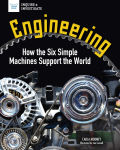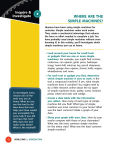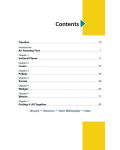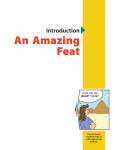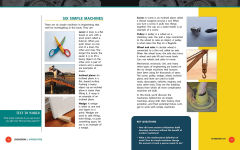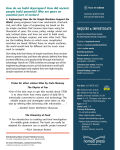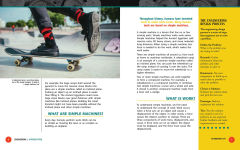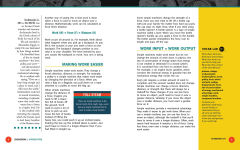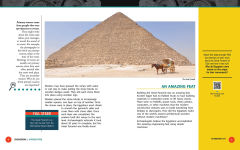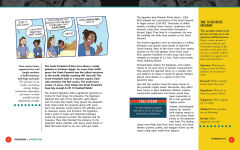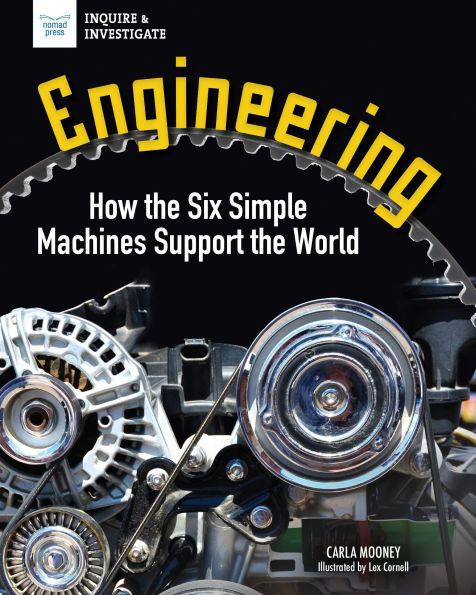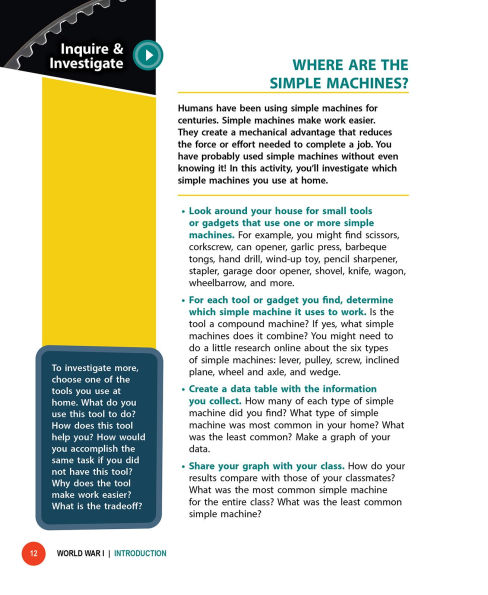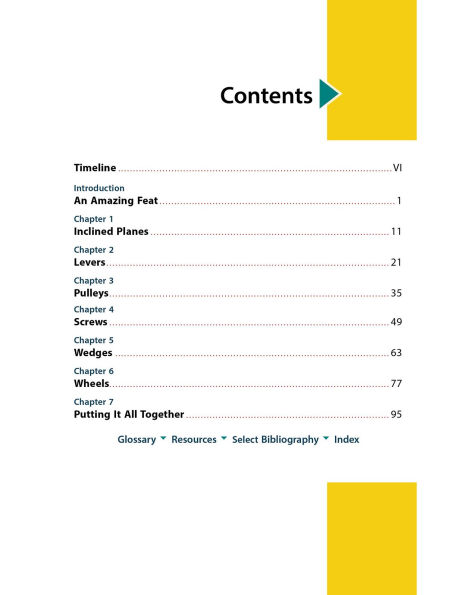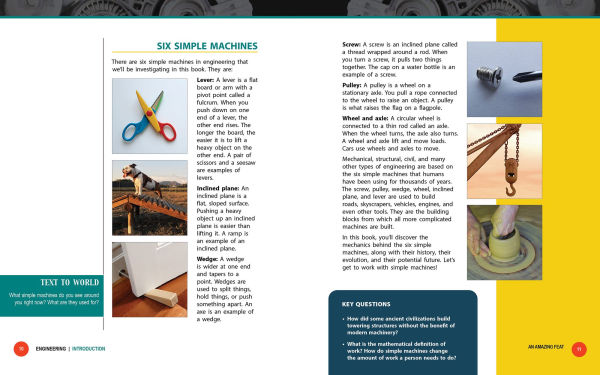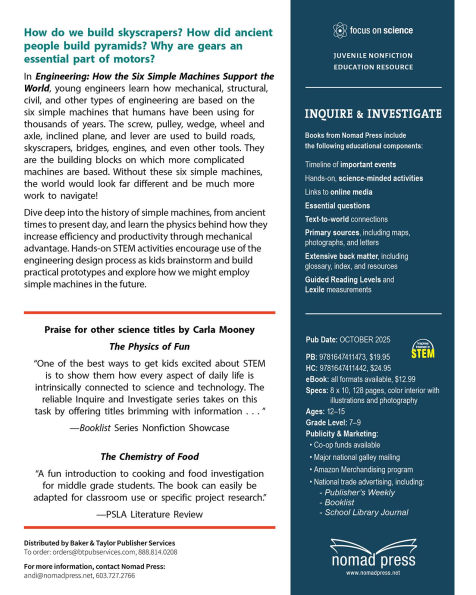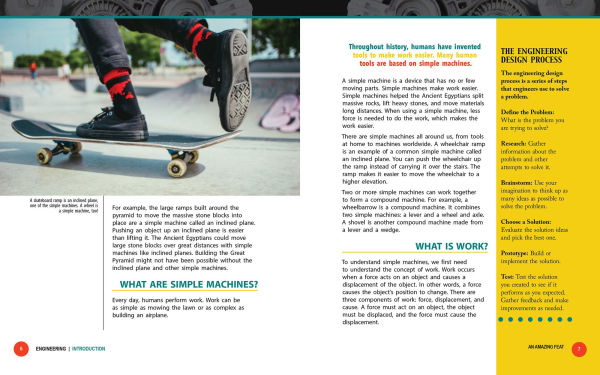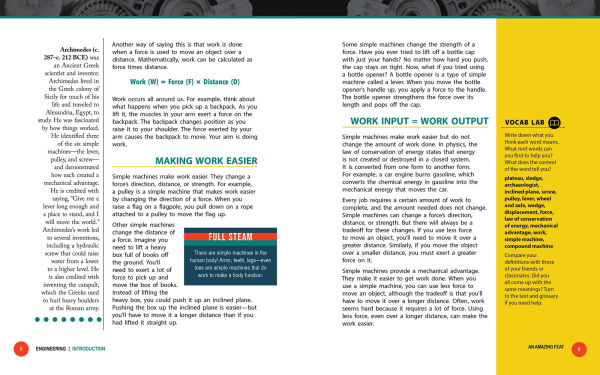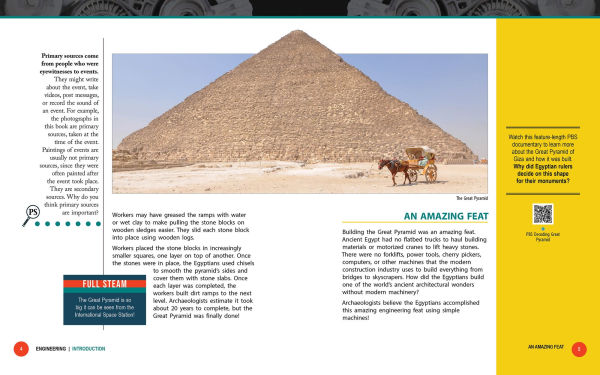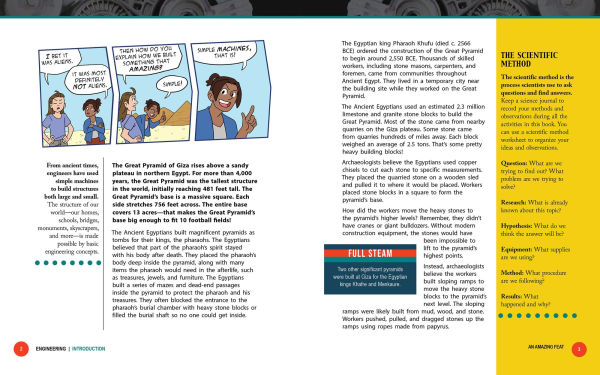How do we build skyscrapers? How did ancient people construct pyramids? Why are gears an essential part of motors?
In Engineering: How the Six Simple Machines Support the World, young engineers learn how mechanical, structural, civil, and other types of engineering are based on the six simple machines that humans have been using for thousands of years. The screw, pulley, wedge, wheel and axle, inclined plane, and lever are used to build roads, skyscrapers, bridges, engines, and even other tools. They are the building blocks on which more complicated machines are based. Without these six simple machines, the world would look far different and be much more work to navigate!
Dive deep into the history of simple machines, from ancient times to present day, and learn the physics behind how they increase efficiency and productivity through mechanical advantage. Hands-on STEM activities encourage use of the engineering design process as kids brainstorm and build practical prototypes and explore how we might employ simple machines in the future.
Additional materials include a glossary, a list of media for further learning, a selected bibliography, and index. All books are leveled for Guided Reading level and Lexile and align with Common Core State Standards and Next Generation Science Standards.
All titles are available in paperback, hardcover, and ebook formats.
How do we build skyscrapers? How did ancient people construct pyramids? Why are gears an essential part of motors?
In Engineering: How the Six Simple Machines Support the World, young engineers learn how mechanical, structural, civil, and other types of engineering are based on the six simple machines that humans have been using for thousands of years. The screw, pulley, wedge, wheel and axle, inclined plane, and lever are used to build roads, skyscrapers, bridges, engines, and even other tools. They are the building blocks on which more complicated machines are based. Without these six simple machines, the world would look far different and be much more work to navigate!
Dive deep into the history of simple machines, from ancient times to present day, and learn the physics behind how they increase efficiency and productivity through mechanical advantage. Hands-on STEM activities encourage use of the engineering design process as kids brainstorm and build practical prototypes and explore how we might employ simple machines in the future.
Additional materials include a glossary, a list of media for further learning, a selected bibliography, and index. All books are leveled for Guided Reading level and Lexile and align with Common Core State Standards and Next Generation Science Standards.
All titles are available in paperback, hardcover, and ebook formats.

Engineering: How the Six Simple Machines Support the World
128
Engineering: How the Six Simple Machines Support the World
128
Product Details
| ISBN-13: | 9781647411442 |
|---|---|
| Publisher: | Nomad Press |
| Publication date: | 10/15/2025 |
| Series: | Inquire & Investigate Series |
| Pages: | 128 |
| Product dimensions: | 8.00(w) x 8.00(h) x (d) |
| Age Range: | 12 - 15 Years |
